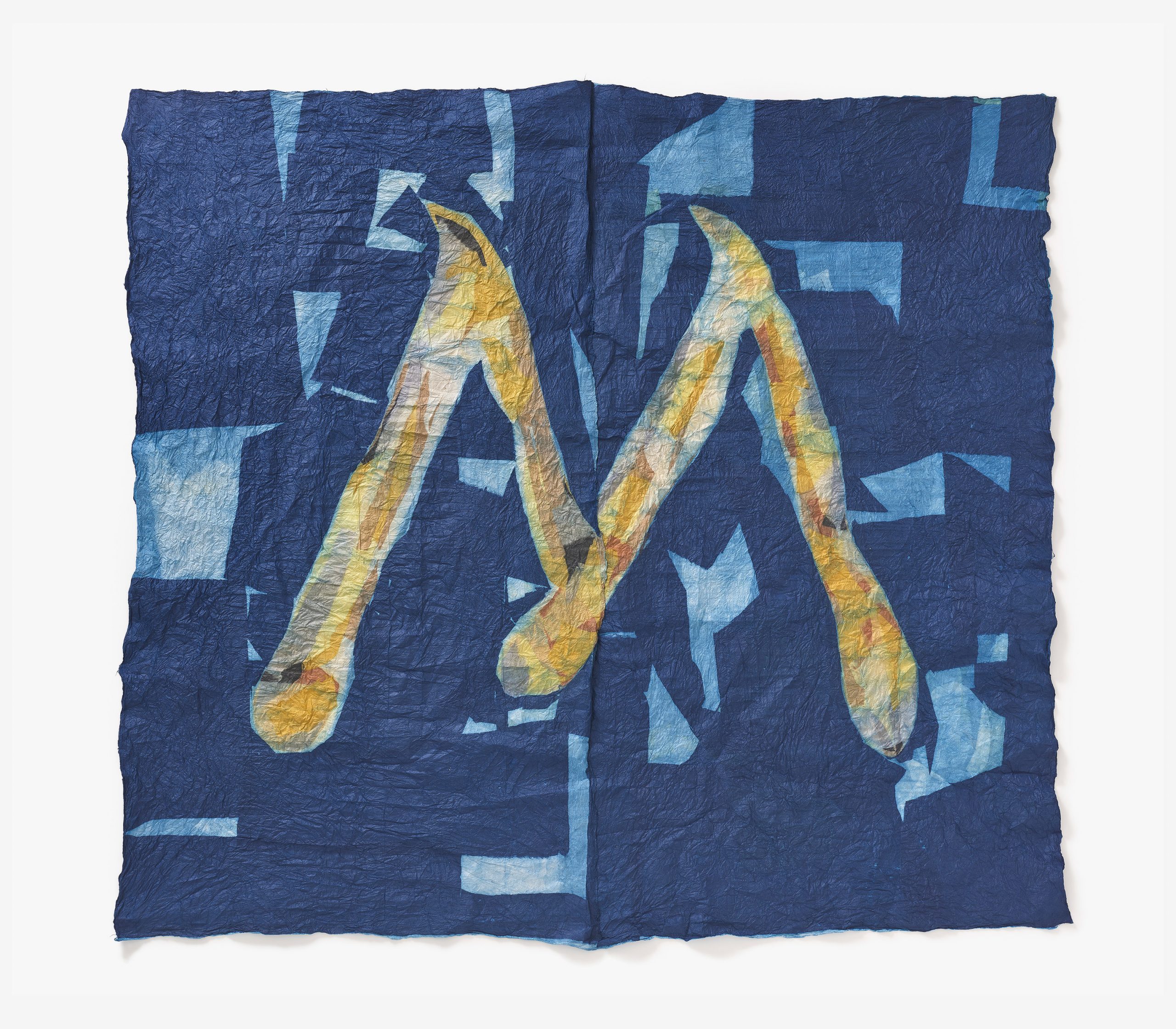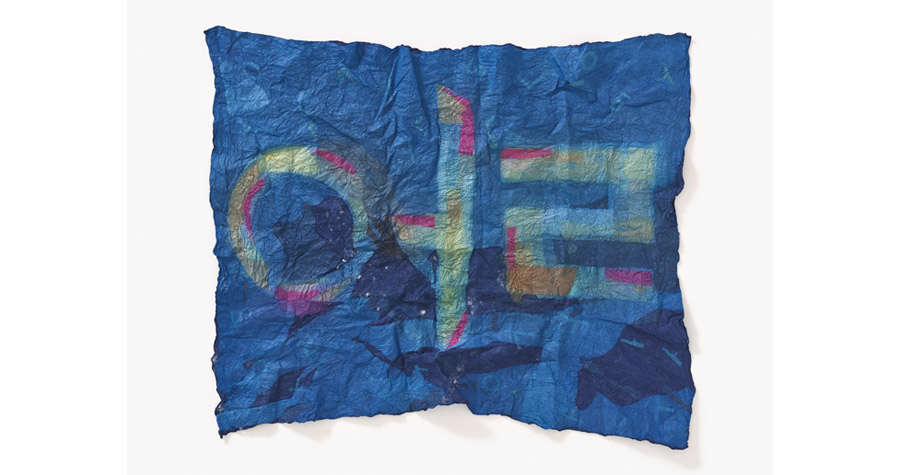박양빈 개인전
CICA Museum, Flexspace-Section C Solo Exhibition
July 26 – 31 2024
2024.07.26 – 31
Show your face
The title of this exhibition, ㄴ ㅓ ㅇ ㅓ ㄹ ㄱ ㅜ ㄹ ㅂ ㅗ ㅇ ㅕ ㅈ ㅜ ㅓ, is a spread-writing form of the Korean sentence 너 얼굴 보여줘 (Show your face), and the English title is a translation of this phrase. Here, ‘face’ refers to ‘typeface’, meaning the face of the letters. Since this year, I have been participating in a design and fine art research project called the Hangul Project Collective, where I held exhibitions and gave presentations based on the visual, cultural, and historical backgrounds of Hangul. My interest in Hangul began from my experience in the multicultural, multi-ethnic, and multilingual society of the United States, especially within the academic ecosystem dominated by English and Anglo-American culture. Although numerous languages exist in the United States, the multilingual aspect of society is often overlooked or underrepresented despite its significance. I wanted to raise awareness and address the social and cultural significance of a minority language, particularly non-Roman scripts like Hangul in a multicultural society. This exhibition is a result of these research backgrounds and motivations, exploring the potential and possibilities of Hangul as a visual tool, writing system, and image. It highlights the ongoing transformation of Hangul from the mid-15th century to the present. Hangul is unique in that it constructs letters through the combination of initial, medial, and final consonants and vowels, allowing the creation of countless characters. Unlike Roman alphabets, which predominantly consist of curves and have definitive forms for each letter, Hangul is composed of straight, geometric lines, resulting in fluid and dynamic forms through combinations. In preparing for this exhibition, I focused on researching Hangul typefaces. The term ‘typeface’ literally means ‘the face of a letter’, referring to the style and appearance of a font. Like a human face, each character has specific visual characteristics, which can be altered through variations in thickness, tilt, and size. I particularly examined characters and metal types used in various documents printed during the Joseon Dynasty, including the Hunminjeongeum Eonhae Edition (A Korean translation of Hunminjeongeum, originally written in Chinese characters), Neungeom Gyeong Eonhae (A Buddhist book explaining the process of translating a Chinese scripture into Hangul), and Joseon Metal Type Specimen Book. I also closely observed the Eulhaeja Byeongyong (Hangul types used with Chinese character types made in the Year of the Blue Pig), the oldest surviving Hangul types. I chose to present the exhibition title 너 얼굴 보여 줘 in a spread-writing form rather than the familiar grouped-writing form used by most Korean speakers today. Although this reduces readability, as spread-writing is rarely used now, I believed it was an ideal structure for visual studies of characters like typefaces, as it allows for independent viewing of Hangul’s consonants and vowels. Indeed, in a spread-writing sentence, the shape precedes the meaning, making it difficult to immediately grasp the meaning, but the visual characteristics of the letters become distinctly apparent. The form and materials of the artwork also play a crucial role in shaping the nature and identity of this exhibition. As Hangul is the Korean writing system and the letters embodying it represent the identity of the culture and community, I chose traditional Korean paper, ‘Hanji’, as the main vessel to contain Hangul. I used the ‘Joomchi’ technique to visually transform and explore this Hanji in various ways. The Joomchi technique utilizes the long fibers characteristic of Hanji, creating a stronger and tougher material by combining several sheets of Hanji through moisture and physical pressure. Joomchi, a traditional Korean paper technique, is based on ‘combination’ like Hangul composition. Its excellent absorbency and durability allow for various color and formative expressions. Historically, Hangul has a deep connection with traditional printing techniques. In the 15th century, Joseon was at the forefront of metal type technology, and through printing using these metal types, books were mass-produced, allowing for the rapid spread of Hangul. I considered the historical symbiotic relationship between Hangul and printing technology, linking the ‘multiple’ nature of printmaking with Hangul’s ability, as a phonetic script, to transcribe the ‘sounds’ of various languages. I also explored ‘wordplay’ (pun) as an art form. Through this exhibition, I wanted to showcase the infinite possibilities of Hangul as a visual tool, writing system, and image. By making Hangul’s face the theme of this exhibition, I aimed to expand awareness of non-Roman scripts, particularly minority scripts and cultures like Hangul, which clearly exist but are often invisible or underrepresented in multicultural, multilingual societies like the United States.
이번 전시의 타이틀 ‘ㄴ ㅓ ㅇ ㅓ ㄹ ㄱ ㅜ ㄹ ㅂ ㅗ ㅇ ㅕ ㅈ ㅜ ㅓ’는 ‘너 얼굴 보여줘’ 라는 한글 문장의 풀어쓰기의 형태이고 영문 타이틀은 이 문장의 의미를 번역한 타이틀 이다. 여기서 얼굴이란 ‘타입페이스’ 즉 글자의 얼굴을 의미한다. 나는 올해부터 한글 프로젝트 컬렉티브(Hangul Project Collective)라는 디자인 및 순수미 술 리서치 프로젝트에 참여하게 되었고 한글의 시각, 문화, 역사적인 배경을 바탕으로 전 시 및 발표를 하였다. 내가 한글이라는 문자에 관해서 연구 및 작업의 배경으로 관심을 두게 된 동기는 미국이라는 다문화, 다민족, 다언어의 사회에서, 특히 영어와 영미문화가 지배하는 학회라는 생태계에서 활동하면서 한글과 같은 미국 내 소수 문자 혹은 비로만 문자에 대해서 더 많은 사람들에게 알리고 예술 및 학술적 주제로써 다루어 보고 싶었기 때문이다. 실제로 미국에는 다양한 언어권의 사람들이 살아가고 수십 가지 이상의 언어 들이 존재하지만, 현실에서는 이러한 다 언어적 부분들이 잘 보이지 않거나 그 중요성에 비해서 제대로 반영되지 못하고 있다. 이 전시는 이러한 연구 배경과 동기에서부터 출발한 작업의 결과물로 시각적 도구, 문자, 이미지로서 한글이 가지고 있는 잠재력과 가능성에 대한 탐구이며 15세기 중반부터 현 재까지 끊임없이 변화하는 한글이라는 젊은 문자에 관한 관심이자 주목이다. 한글은 특 이하게도 초성, 중성, 종성이라는 문자의 ‘합’을 통해서 글자를 구축하는 문자이고 이러한 자음과 모음의 구성을 활용해서 무수히 많은 글자를 조합할 수가 있다. 로만 알파벳의 경우에는 곡선이 주를 이루고 각 문자가 독립적으로 존재하기 때문에 형태가 확정적인 데 반해 한글은 직선, 즉 기하학적인 선들이 주를 이루고 이들이 ‘합’에 의해서 조합이 되기 때문에 형태가 유동적이다. 이 전시를 준비하면서 한글 타입페이스(Typeface)에 관한 연구를 하였는데 타입페이스란 말 그대로 ‘문자의 얼굴’이란 의미로 글꼴의 스타일이나 외형을 지칭하는 용어이다. 즉 문자도 마치 사람의 얼굴처럼 특정한 시각적 특성이 있으며, 굵기, 기울기, 크기 등의 변 형을 통해서 특정 디자인의 글자의 얼굴을 만들 수 있다. 특히 훈민정음 언해본, 능엄경 언해, 조선활자견본첩과 같은 조선시대 때 인쇄된 여러 문서에 등장하는 글자들과 이러 한 문서들을 인쇄하는 데 사용된 금속활자들을 두루두루 참고하였으며 특히 현재 남아있 는 가장 오래된 한글 활자인 ‘을해자병용’ 한글 활자들을 자세히 관찰하였다. 특히 전시의 제목 ‘너 얼굴 보여 줘’를 현재 대부분의 한국어를 사용하는 사람들에게 익 숙한 ‘모아쓰기’가 아닌 ‘풀어쓰기’로 구성하였는데 이유는 ‘풀어쓰기’는 현재 거의 사용되 지 않기 때문에 가독성이 떨어지나 한글의 자음과 모음을 분리해서 독립적으로 볼 수 있 으므로 타입페이스와 같은 문자의 시각적 연구를 하기에는 이상적인 구조라고 생각하였 기 때문이다. 실제로 풀어쓰기 문장은 모양이 의미보다 앞서 다가오므로 그 뜻이 무엇인 지 바로 알아채기는 어려우나 글자가 가지고 있는 시각적인 특성들은 뚜렷하게 들어온다. 작품의 형식과 재료 역시 이번 전시의 성격과 정체성을 구성하는 데 매우 중요한 역할을 한다. 한국어는 ‘우리말’이고 그 말을 담는 문자는 그 문화 혹은 공동체의 정체성을 대변 하기에 한글을 담아내기 위한 그릇으로 한국의 전통적인 종이 즉 ‘한지’를 주재료로 하였 고 그 한지를 시각적으로 다양하게 변형하고 탐구할 수 있는 미술 기법으로 ‘줌치’ 기법 을 사용하였다. 줌치기법은 한지가 가지고 있는 특성인 긴 섬유소를 활용하는데 수분과 물리적인 압력을 통해 여러 장의 한지를 ‘합’을 통해서 더 강하고 질긴 재질로 만든다. 즉, ‘줌치’는 한국의 전통적인 한지기법으로 한글의 조합처럼 ‘합’을 본질로 하며 한지의 우수한 흡수성과 질긴 속성으로 인해서 다양한 색상과 조형적인 표현을 구사할 수 있는 기법이며 매체이다. 한글은 역사적으로 전통적인 인쇄술이라고 할 수 있는 판화 (Printmaking)와도 깊은 관계가 있다. 15세기 조선은 당시 최첨단의 금속활자술 보유국이 었고 이 금속활자를 활용한 인쇄술을 통해 서적이 대량으로 생산되어 한글이 빠르게 보 급될 수가 있었다. 나는 판화가 가진 성격 중 하나인 ‘다수’(Multiple)와 표음문자인 한글 이 여러 다른 언어들의 ‘음’ 표기할 수 있는 특성을 연계하여 문자와 인쇄술의 역사적 상 생 관계에 대해서도 고민하였고 예술로서의 ‘언어유희’(Pun)에 대해서도 연구하였다. 이번 전시를 통해서 한글이 가지고 있는 시각적 도구, 문자, 이미지로서의 무한한 가능성 을 보여 주고 싶었고 미국과 같은 다민족, 다언어, 다문화 사회에서 분명히 존재하지만 잘 보이거나 대변되지 않는 비로만 문자, 특히 한글과 같은 소수 문자와 문화에 대한 인 식을 확장하고자 한글의 얼굴을 이번 전시의 화두로 삼았다.

